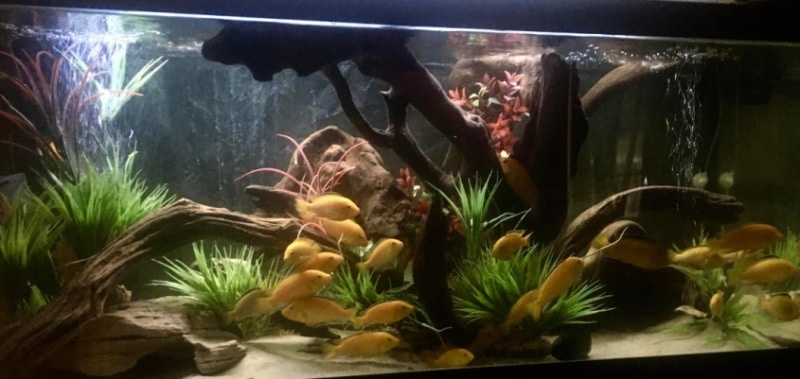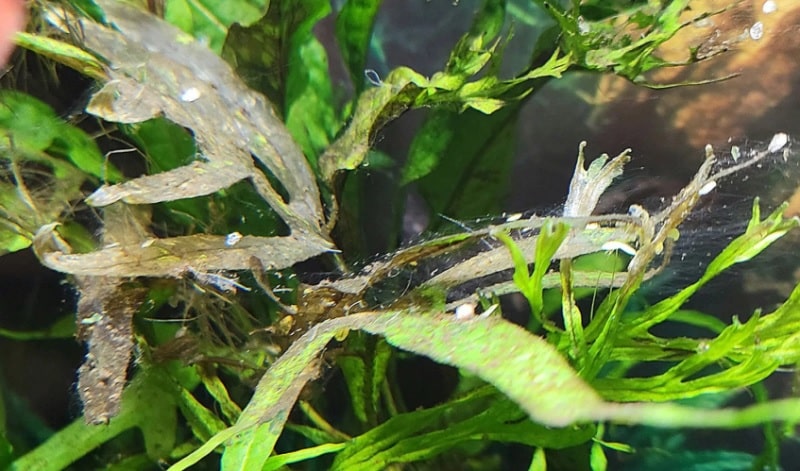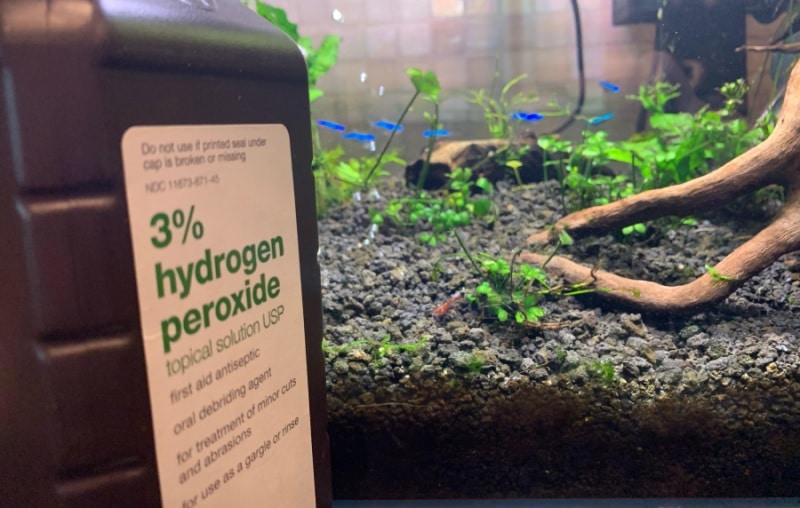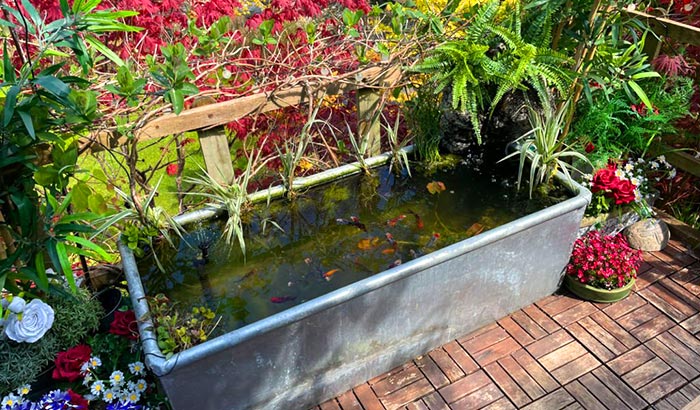Plastic aquarium plants are a popular alternative to live plants because they don’t require much care and can last for many years.
But, we should not assume that they do not require proper cleaning, as prolonged neglect can result in algae and dirt.
In this blog post, National Park Aquarium will discuss how to clean plastic aquarium plants and give you some tips to make the process easier.
Method 1: Using Vinegar to Clean Aquarium Plants
The most common and easiest way to clean plastic aquarium plants is by using white vinegar.

What you need
- A bucket
- A sponge
- Some old toothbrushes
- A soft cloth
- White vinegar
Instructions Cleaning
Step 1: Remove the plant from the aquarium
You can use a pair of tongs or gloves to avoid getting scratched by the plant’s leaves.
Make sure to clean the plant far from the aquarium because you don’t want to damage your fish or other live aquarium plants.
Step 2: Submerge the plants in the vinegar
Next, fill a bucket with lukewarm water and white vinegar. The ratio of water to vinegar should be 1:1.
So, if you are using a 1-gallon bucket, add 1 cup of water and 1 cup of vinegar.
Then, submerge the plant in the bucket and let it soak for 30 minutes.
Step 3: Scrub the dirt off the plants
After 30 minutes, use a sponge to scrub the plant. Be sure to get all sides of the leaves and stem.
If you see any algae or other build-up on the plant, use an old toothbrush to help remove it.
Step 4: Finish Cleaning
Rinse the plant with clean water and place it back in the aquarium. Carry out this routine monthly or whenever required.
Method 2: Clean Aquarium Plants With Boiling Water
Another way to clean plastic aquarium plants is by boiling them in water. This method is especially effective if the plant is covered in algae. Boiling plastic aquarium plants is a quick and easy way to clean them and make them look new again.

What you will need
- A pot to boil water
- Clean water
- A sponge
- A container
- A pair of gloves
Instructions
Step 1: Remove the plants from the tank and prepare the water
Pour water into a pot and set it on the stovetop. Turn the heat up to high and wait for the water to come to a boil.
While waiting for the water, wear the gloves and carefully bring the plants out of your tank.
Step 2: Soak the plants in boiled water
You can pour the boiled water into a container and then soak the plants.
Leave the plastic plants there for about 15 minutes for the hot water to kill algae stuck onto the plants.
Bring them out after the time is up, and place them onto a clean surface to cool down.
Step 3: Scrub the algae
You can use a small sponge to scrub all the dead algae off the plants with ease.
Step 4: Finish cleaning algae
You can now remove the plant from the pot and rinse it with clean water.
Place the plant back in the aquarium and repeat this process as needed.
Method 3: Clean Aquarium Plants with Hydrogen Peroxide
Peroxide is a more potent cleanser than vinegar. It can tackle harder variants, such as black beard algae. I’ve observed that using peroxide requires slightly more scrubbing to remove algae compared to bleach.

For cleaning plastic aquarium plants using peroxide, here’s what I suggest:
- 3% peroxide solution (standard drugstore variety works well)
- Spray bottle with a trigger
- Cleaning brush
Instructions
- Generously spray the plants using peroxide.
- Gently brush the surface using the cleaning brush.
- Allow the peroxide to act for a couple of minutes, then wash the plants using tap water.
- Redo the steps if any spots remain.
- After rinsing, you can directly place the plastic plants back into the tank. Minimal
- peroxide residues won’t harm your fish.
How to Clean Silk Aquarium Plants

If you have silk aquarium plants, you will want to clean them regularly. Silk plants can be a great addition to your tank, but they can also harbor bacteria and other unwanted organisms.
Cleaning your silk plants will help to keep your tank clean and free of harmful bacteria. You need to prepare the following:
- A bucket
- Some old toothbrushes
- A soft cloth
- White vinegar
- Water
Here’re the simple steps to follow:
- Remove the plant from the aquarium.
- Place it in lukewarm water and white vinegar solution with a ratio of 1:1.
- Let the plant soak for 30 minutes.
- Use a sponge to scrub the plant. Be sure to get all sides of the leaves and stem. If you see any algae or other build-up on the plant, use an old toothbrush to help remove it.
- Rinse the plant with clean water and place it back in the aquarium.
Tips for Cleaning Your Aquarium Plants
- Most plastic aquarium plants are safe to clean with hot water.
- If your plants are particularly dirty, you may need to soak them in a stronger bleach solution for a few minutes.
- Be sure to rinse the plants very well after any bleaching, as residual bleach can be harmful to fish.
- It’s vital to recognize that all plastics aren’t made the same way. Some types of plastic are more porous than others and can harbor bacteria. So, if you’re going to clean your plants, be sure to use a mild soap and warm water solution.
- Avoid using abrasive cleaners or scrubbers on your plants. These can damage the surface of the plastic and make it more susceptible to scratches and other wear and tear.
- Allow your plants to air dry completely before putting them back in the tank. This will aid in hindering the proliferation of mold and mildew.
Reference source: Frederick Dunn
Conclusion
Cleaning your plastic aquarium plants is a necessary chore if you want to keep them looking their best and functioning properly in your tank.
Fortunately, this is not a complicated process and can be completed in just a few minutes. Just apply “how to clean plastic aquarium plants” we’ve guided above. Have you cleaned your plastic aquarium plants recently? If so, what method did you use? Let us know in the comments below.
Learn More:




